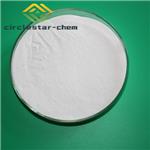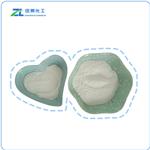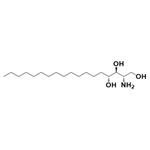Description
Phytosphingosine is a sphingolipid with a hydroxyl group at the C4 position that is found mainly in fungi and plants but also in animals, including humans. It is metabolized to odd-numbered fatty acids with 2-hydroxy palmitic acid as an intermediate. Phytosphingosine dose-dependently induces cell death of CHO cells and inhibits carbachol-induced activation of phospholipase D (PLD) in CHO cells transfected with
C. elegans muscarinic acetylcholine receptors. It is essential in the heat stress response in
S. cerevisiae. [Matreya, LLC. Catalog No. 1330]
Chemical Properties
Off-White Solid
Uses
Phytosphingosine is a natural anti-microbial compound and it is involved in several cellular processes such as cell differentiation and anti-inflammation.
Uses
phytosphingosine is a sphingolipid that can improve the overall condition of skin and hair. Some sources site anti-microbial and anti-inflammatory properties. Research indicates similar activity to retinoic acid, in which case it may be particularly beneficial for aging and photo-aging skin.
Definition
ChEBI: Phytosphingosine is a sphingoid, an amino alcohol and a triol. It has a role as a Saccharomyces cerevisiae metabolite and a mouse metabolite. It is functionally related to a N-acyl-beta-D-galactosylphytosphingosine and a sphinganine. It is a conjugate base of a phytosphingosine(1+).
Origin
In 1884, chemist J.L.W coined the word phytosphingosine, which was taken from the term “sphingoid”, a major component in all biological membranes. There are four types of sphingoid bases and phytosphingosine is one of them. Phytosphingosine is a widely distributed natural sphingoid base and found in fungi, plants, and animals.
Flammability and Explosibility
Not classified
Veterinary Drugs and Treatments
Phytosphingosine is a unique topical antiseborrheic compound. It is in a class called ceramides which are waxy materials meant to meant
to mimic the normal lipid composition of the stratum corneum. It may also have some antiinflammatory and antimicrobial properties.
References
1) Fischer et al. (2012), Antibacterial activity of sphingoid bases and fatty acids against Gram-positive and Gram-negative bacteria; Antimicrob. Agents Chemother., 56 1157
2) Fischer et al. (2013), Sphingoid bases are taken up by Escherichia coli and Staphylococcus aureus and induce ultrastructural damage; Skin Pharmacol. Physiol., 26 36




